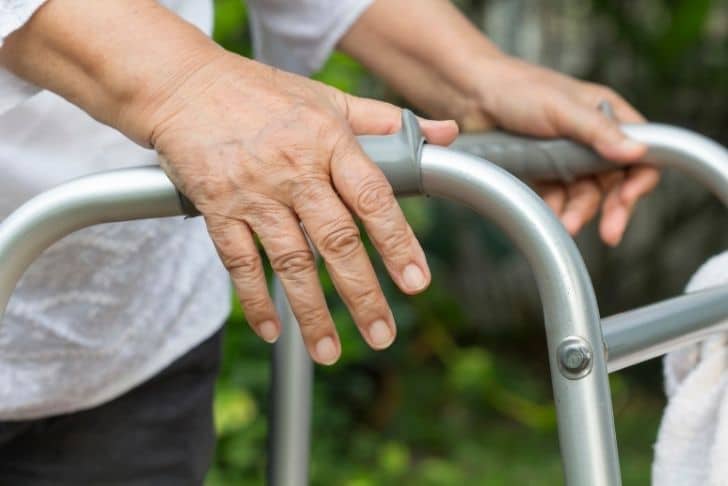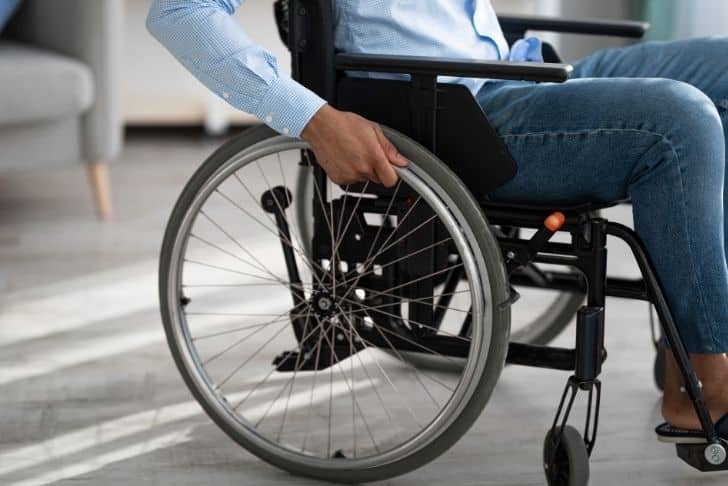In “The Pro’s and Con’s of Early Use of Mobility Aids for Seniors“, you will uncover the complexities and considerations surrounding the early adoption of various mobility aids. This valuable guide details the important role healthcare professionals play in selecting a well-suited tool to fit the user’s needs and abilities. From canes to power wheelchairs, the article explores an array of mobility devices each designed to enhance quality of life for seniors with varying levels of mobility impairments. It also shines light on the insurance implications and the crucial medical assessments that guide the overall selection process. However, the premature application of these aids could potentially impact a senior’s overall health, mobility, and activity levels, insisting on the crucial need for expert consultation and cautious decision making.

Understanding Different Types of Mobility Aids
It’s essential to understand that there are several types of mobility aids you can choose from, depending on your level of mobility impairment. These aids range from canes and walkers to power scooters and wheelchairs, covering a broad spectrum of needs.
Canes and Their Uses
Canes are the simplest form of mobility aids and are best suited for you if you have a minimal balance impairment or if one of your legs is noticeably weaker than the other. The supporting end of the cane can either have a single contact point or a quad base featuring four feet, providing stability and balance. The primary function of canes is to redistribute weight from a lower extremity that is weaker or in pain to the cane itself, thus facilitating your movement.
Walkers and Rollators: Benefits and Uses
Walkers and their wheeled variations, known as rollators, offer more support compared to canes. But remember, you need to have moderate arm and hand strength to use them. They serve as an intermediary mobility aid, beneficial for those who require a higher degree of support than a cane provides but do not yet require a wheelchair. Rollators also often come with a built-in seat, which allows for breaks when needed.
Power Scooters: Who Can Benefit From This?
Power scooters can be a game-changer if you lack the ability to walk long distances. They are an excellent choice for you if you can sit upright for extended periods and control the scooter’s throttle. Power scooters offer a greater degree of independence, enabling you to move about more freely without being a huge drain on your energy levels.
Manual Wheelchairs: The Different Features
Manual wheelchairs offer considerable support and are ideal for those who require mobility assistance constantly. There are several types of manual wheelchairs, including standard, lightweight, and ultra-lightweight models, catering to various needs. The choice between these types largely depends on your physical ability, lifestyle, and frequency of use.
Power Wheelchairs: The Different Options
Power wheelchairs, as the name suggests, are motorized versions of manual wheelchairs. They are designed for people with severe mobility impairments and those with progressive diseases that lead to weakness and loss of muscular control. These wheelchairs come with many customizable options and features that cater to your specific needs.
Choosing the Right Mobility Aid for Seniors
Selecting the right mobility aid requires careful evaluation of your needs, abilities, and professional advice.
The Role of Healthcare Professionals
Healthcare professionals play a crucial role in helping you choose the right equipment. They take into account your needs, abilities, and ensure the device fits you well, offering maximum safety and efficiency.
Determining Individual Needs and Abilities
It is crucial to take into account your individual needs and abilities when choosing a mobility aid. Factors to consider include your level of mobility, the cause of mobility impairment, and how regularly you’ll be using the mobility aid.
The Importance of Proper Fitting and Usage
It’s crucial that the selected mobility aid fits you well and that you know how to use it safely. An improperly fitted or used mobility aid can do more harm than good, potentially leading to accidents and further impairing your mobility.
The Positive Impacts of Early Use of Mobility Aids for Seniors
Introducing mobility aids early on can have numerous benefits, including promoting independence and reducing the risk of falls and injuries.
Promoting Independence
Mobility aids can significantly help seniors live more independently. They allow you to move about freely, perform daily tasks with ease, and generally improve your quality of life.
Preventing Falls and Injuries
By providing stability and support, mobility aids can greatly reduce your risk of falls and related injuries. This is particularly important for seniors, as falls can lead to long-duration hospital stays and significant declines in health and independence.
Reducing Fear and Anxiety
Mobility aids can also help reduce feelings of fear and anxiety about walking or moving. You may feel safer and more confident, knowing that there is support available, which can make a great difference to your mental wellbeing.
Improving Quality of Life
By promoting independence, preventing potential injuries, and reducing fear, mobility aids significantly improve your overall quality of life.
Drawbacks of Early Use of Mobility aids for Seniors
Despite the benefits, there are potential drawbacks to the early introduction of mobility aids.
Potential Negative Effects on Mobility and Activity Levels
Using mobility aids before they are truly needed may lead to decreased activity levels, as you may become overly reliant on the aid for movement. This can result in decreased muscle strength and, consequently, reduced mobility.
Risks of Becoming Reliant on Aids
There’s a risk that you may become too dependent on mobility aids. While the intention of these aids is to provide assistance, they are not meant to replace all movement. It’s still important to maintain whatever natural movement and activity you can.
The Possibility of Stigmatisation
There can also be societal stigmas associated with the use of mobility aids, which can affect you emotionally. It’s thus important to remember that assistive devices are practical tools for enhancing your independence, not signs of incapacity.

Managing Physical and Psychological Impacts of Early Use of Mobility Aids
Managing the physical and psychological impacts of mobility aid use requires a blend of disciplined use, physiotherapy, and psychological support.
Interestingly Controlling the Use
While mobility aids are designed to assist movement, they should not replace it completely. Include regular exercise in your routine to maintain strength and flexibility.
The Role of Physiotherapy
Physiotherapists can guide you in maintaining mobility while using aids. They can devise an appropriate exercise regime that balances the use of mobility aids with natural movement.
Psychological Support and Counselling
Psychology plays a vital role in dealing with the emotional impact of using mobility aids. Counsellors and psychologists can provide strategies to cope with feelings of dependency, ‘loss’, or stigmatisation.
Involvement of Insurance Companies and Financial Implications
Handling insurance coverage for mobility aids can be an important consideration, due to the potential high cost of some devices.
Understanding Medical Insurance Coverage
Typically, insurance companies cover durable medical equipment, including many mobility aids. However, it’s vital that you understand the specifics of your policy, especially the extent of coverage and co-payment requirements.
Navigating Paperwork and Processing Hurdles
Processing insurance claims often involves substantial paperwork and time. It may be helpful to have a representative or advocate to assist you in navigating through the process.
The Costs of Extras and Accessories
While insurance may cover the basics, additional features and accessories often come out of your pocket. Thus, it’s good to acquaint yourself with potential expenses from the beginning.

Role of Medical Professionals in Recommending Mobility Aids
Medical professionals and therapists play a pivotal role in recommending mobility aids based on your individual health status and mobility needs.
The Importance of Physical Examinations
A thorough physical examination is vital in determining the most appropriate mobility aid for you. It provides a clear picture of your strengths, limitations, and what kind of support you might need.
The Relevance of Medical Referrals
A doctor’s referral is typically necessary for insurance purposes. But more importantly, the doctor’s referral is based on a comprehensive assessment of your health and mobility, ensuring you get the right aid.
Role in Advising on Mobility Assessments
A mobility assessment is often conducted by a therapist and provides an in-depth understanding of your mobility and equipment needs. Medical professionals often coordinate this process and make final recommendations based on the assessment’s findings.
The Balance between Need and Early Use of Mobility Aids
Striking the right balance between need and early usage of mobility aids can be a complicated process.
When is Too Early?
While early use has its benefits, using aids before they are needed can restrict your natural activity levels and potentially harm your overall health. Therefore, it’s crucial to start using mobility aids only when they are truly needed and in accordance with professional advice.
The Impact of Using Aids Before They’re Needed
Potential over-reliance on aids can limit your physical activity, leading to decreased muscle strength and activity levels. It can also psychologically discourage you from engaging in activities you could still manage without an aid.
Ensuring Careful Expert Consideration and Advice
Ensuring you have the best possible advice from healthcare professionals is critical. They can guide you in deciding when to commence using aids and assist you in selecting the most suitable ones for your needs.
Considering Adaptive Technologies in Mobility Aids
Adaptive technologies have revolutionized mobility aids, improving functionality, convenience, and user experience.
Understanding Adaptive Technologies
Adaptive technologies are advanced features built into mobility aids, making them more intuitive and user-friendly. These may include features like automated braking systems in wheelchairs or sensor technology in walking aids.
The Benefits of Using Adaptive Technologies
These technologies can enhance your safety and mobility. For example, power wheelchairs can be adapted to be controlled by different body movements if you have limited arm mobility. Similarly, walking aids can come with LED lights to ensure safe movement in low light.
The Limits of Adaptive Technologies
While adaptive technologies offer numerous benefits, they have limitations too. For instance, they often come with higher price tags and may not be covered by insurance. Also, not all users might have the technical literacy to use these features.
The Future of Mobility Aids for Seniors
The future of mobility aids looks promising, with new technology and design improvements on the horizon.
Technological Advancements
Further advancements in technology will continue to be incorporated into mobility aids, improving their effectiveness and ease of use.
Future Design Improvements
Ergonomic-centric and user-friendly designs will be the focus of future mobility aids, giving utmost priority to the user’s comfort and ease.
Potential Policies and Regulations
As technology progresses, there is also a need for stringent policies and regulations ensuring user safety and equal distribution of these advancements. These regulations would ensure that the quality of mobility aids is maintained and that they are accessible to all who need them.
In conclusion, mobility aids can vastly improve the quality of life for seniors or anyone with mobility impairments. Choosing the right type, understanding their benefits and drawbacks, and managing their use effectively are all key aspects to consider. Our future lies in further enhancing these aids through technological advancements and better user-centric policies and practices.
